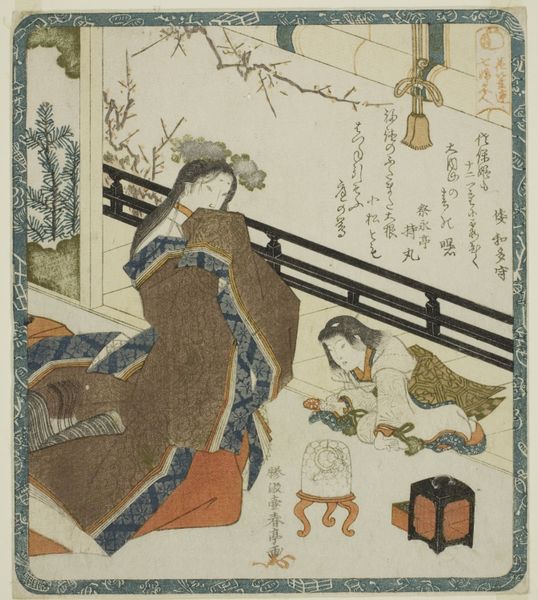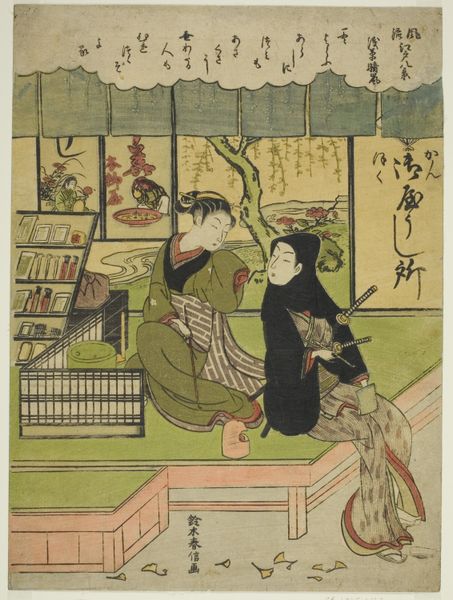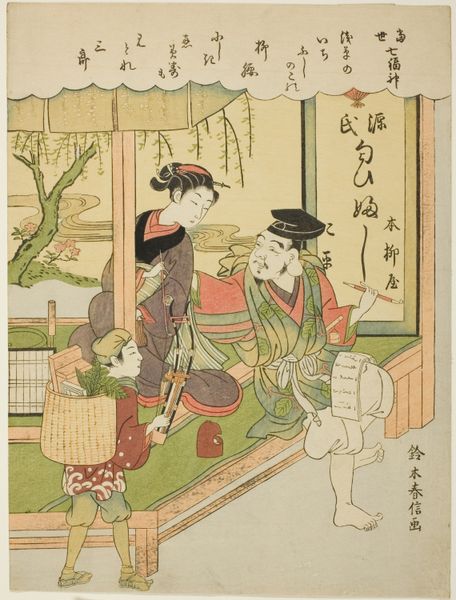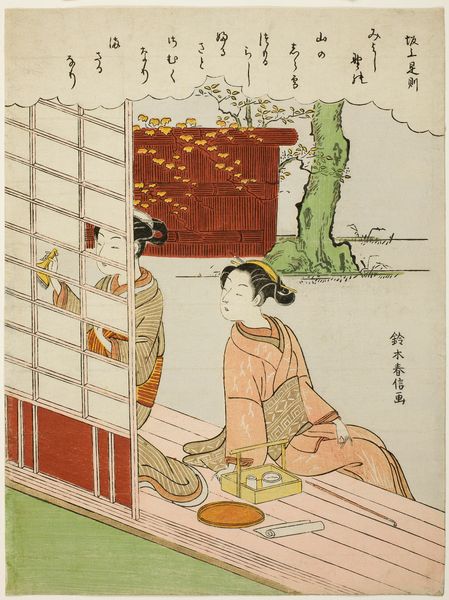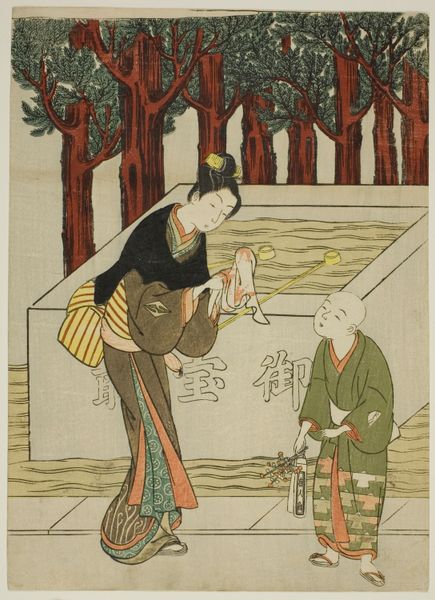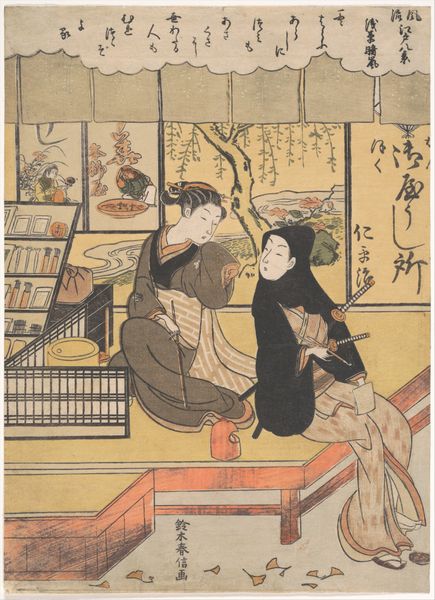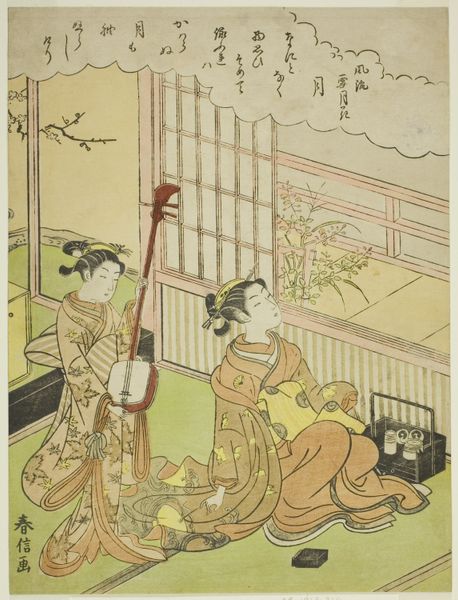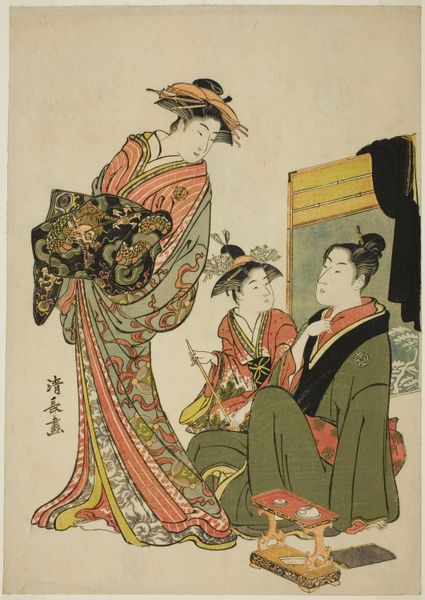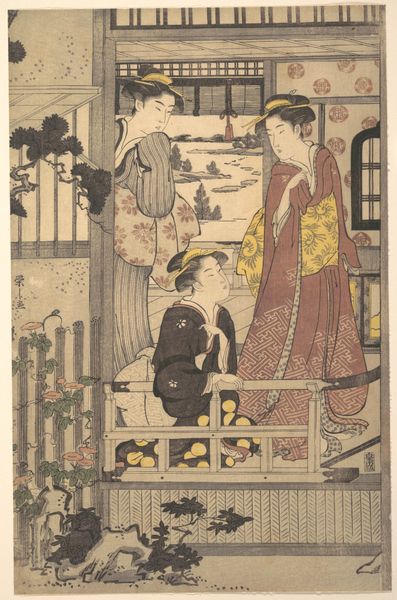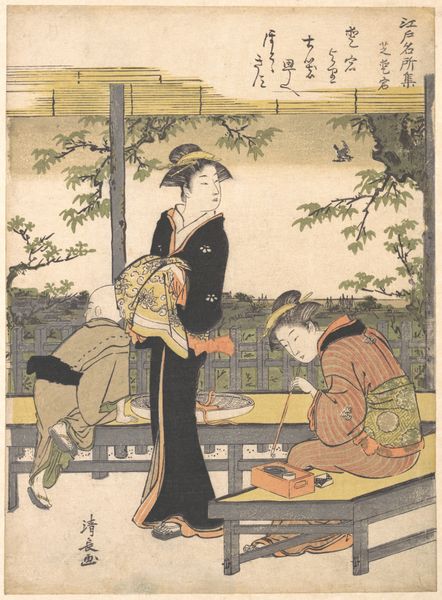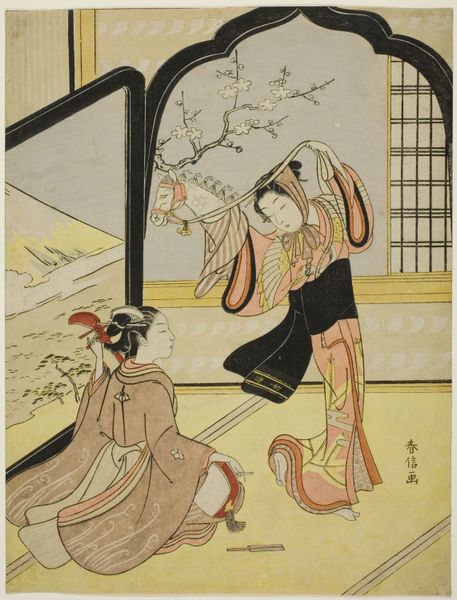
Ofuji, the Shop Girl of the Motoyanagiya, with a Customer c. 1769
0:00
0:00
# print
#
asian-art
#
ukiyo-e
#
figuration
#
orientalism
#
genre-painting
Dimensions: 11 × 8 in.
Copyright: Public Domain
Suzuki Harunobu created this color woodblock print of Ofuji and a customer in Japan during the mid-1700s. These images of beautiful women, or *bijinga*, were extremely popular, but they also offer a glimpse into the social and economic life of the Edo period. What stories can we read in this scene? Here, a shop girl attends to a customer in what appears to be an intimate setting. At their feet is a rooster, an animal used to mark time, suggesting this tryst is happening during daylight hours. Other signs of commercial activity, such as the display case of goods and the shop’s signage, give further clues about this public interaction. Woodblock prints like this one were not simply aesthetic objects. They were products of an elaborate system of production involving artists, block cutters, printers, and publishers. Through careful study of these works, historians can learn about the circulation of images, the development of urban culture, and the representation of social roles in 18th century Japan.
Comments
No comments
Be the first to comment and join the conversation on the ultimate creative platform.
